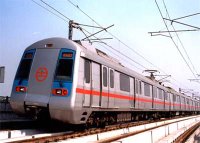 14th of April is an important day in Assam. It is the New Year for the Assamese people. It is the first day of Baisakh (Bohag in Assamese) and is actually celebrated as the New Year day in various forms across many states in India. People across India celebrate the day in their own ways. In Assam, we celebrate the day as Rongali Bihu or Bohag Bihu. Traditionally the festivities and celebration continues for 7 days. In the recent past, this is the first time I have missed a bihu celebration. Delhi continued to be hot and dry in contrast to the refreshing spring we were used to.
14th of April is an important day in Assam. It is the New Year for the Assamese people. It is the first day of Baisakh (Bohag in Assamese) and is actually celebrated as the New Year day in various forms across many states in India. People across India celebrate the day in their own ways. In Assam, we celebrate the day as Rongali Bihu or Bohag Bihu. Traditionally the festivities and celebration continues for 7 days. In the recent past, this is the first time I have missed a bihu celebration. Delhi continued to be hot and dry in contrast to the refreshing spring we were used to.Rongali bihu is the celebration of spring. Rains, freshly sprouted grass, fresh verdant green all around, blooming flowers and the cacophony of birds, specially the cuckoo --- all heralds’ arrival of spring. This coupled with the pleasant weather that prevails during this time of the year makes working and moving around very comfortable. Bihu unites all the people cutting across the threads of cast, creed, tribes and religion. Rongali means joy and fun. The Bihu dance symbolizes this spirit of celebration. When one think of Assam, two things comes to the mind –one is the Bihu dance and the second is the one horned rhinoceros. They symbolize Assam. I am putting up a photo of Bihu dance performance, which incidentally is quite old. The dance is often performed in groups where there are both male and female participate. The performance traditionally starts with drum (called dhols) performers (called dhulia) and then the female dancers enters the scene. The performance ends with a majestic drum performance. Try to visit Assam during the Rongali Bihu celebrations. That is between second and third week of April. You can combine this with a visit to Kaziranga. The locals there say that the week prior to bihu in April is the best time to visit the park. The fresh grasses bring out more animals to the open grazing lands. The park closes for tourists around 3rd week of April as rains gets harder.

